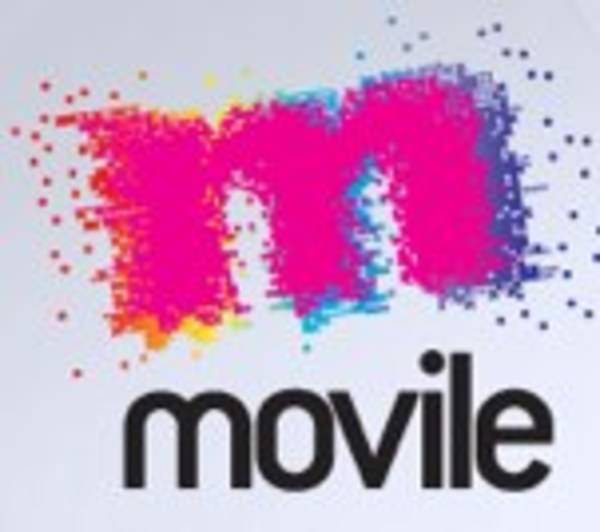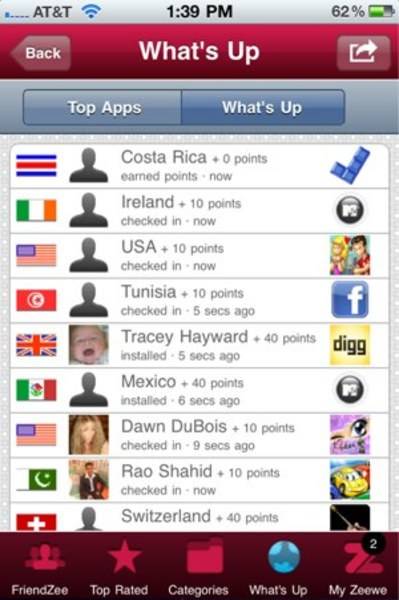You’re probably familiar with the practice of developing countries seeking to leapfrog over the world’s leading economies in their own development. They aim to capture (or surpass) the growth and comforts of the previously-developed world while avoiding mistakes and externalities like polution and inefficiency. What if the future of the web unfolded that way, too?

That’s where Brazilian mobile services company Movile finds itself: with a thriving business of mobile users throughout Latin America, who are heavily engaged in purchasing SMS services and virtual goods, but with the knowledge that there’s far more to be done than sell those existing products. Movile has a corporate vision of leapfrogging over the App Store 1.0 experience so dominated by Apple among smart phone owners in the United States. How does the company aim to build the app store of the future? By combining cross-platform mobile HTML5 with ecommerce and now social APIs.
Movile’s future-facing project Zeewe announced today the availability of its new FriendZee API, which makes it easy for web app developers to add leaderboards and social features to their mobile web apps. It’s like OpenFeint (acquired this Spring by Japanese gaming company GREE for $100m), but for all kinds of apps beyond games and specifically for HTML5 mobile web apps instead of native apps.

The technology itself is interesting, but it’s made even more so because it’s coming out of Brazil. “We believe that the future of mobile apps is based on the open web standards of HTML5 and driving cross-platform mobile experiences that leverage the social graph,” says Flávio Stecca, CTO of Movile and Zeewe Lead. “We think [our platform] will boost discovery and usage of HTML5. We expect that in the future, most users will find the best mobile apps, not by going to a traditional app store but through social discovery – just like they do with web content today.”
Can a Mobile Web App Store Compete?
Right now the Zeewe app store is not as impressive as iTunes, that’s for sure. The apps selection is of lower quality and the apps themselves are too. But that might not be true forever. The quality of native and mobile web app experiences are fast converging, with innovators like Joe Hewitt and others building technology that cuts down the performance gap between the two. Executives at Movile say they’ve seen demos at Google of prelaunched Android web performance that give them confidence HTML5 will reach parity in roughly the next generation of mobile devices.
They also say they are working hard to educate developers about the importance of making proper use of HTML5 itself, the spec’s capacity for local storage, for example, so that mobile web apps will perform better for users. I’ve spoken to other companies that are seeking to educate mobile developers about how to properly limit the number of network calls that an app has to make. Those things might seem like a hassle to some developers, but all of these factors together are what mobile web app industry leaders hope will come together to make mobile web apps such a compelling experience for users that the platforms can compete with native app stores in the future.
One thing is for sure: independent app stores are expected by industry analysts to explode. Peggy Anne Salz summarized some leading research on the topic last Summer on MSearchGroove:
According to Sizing Up The Global Apps Market, the recent milestone report from Chetan Sharma Consulting (commissioned by independent app store GetJar), app downloads are expected to rise from over 7 billion in 2009 (Asia accounted for a whopping 37 percent of the total) to almost 50 billion by 2012. Revenue is forecast to increase from $4.1 billion in 2009 to $17.5 billion by 2012. Predictably, a variety of models — ranging from paid apps and apps bundled with subscription offers, to ad-funded schemes and loyalty programs that raise brand awareness – will drive distribution and monetization.
If those predictions prove correct, it’s hard to imagine HTML5 mobile web app stores not being a part of that story.
Right now Zeewe has some good content on it. It’s got the open web’s most popular kind of content (which, unfortunately, is porn), it’s got lots of games and it’s got some other good mobile web apps. I added an unofficial app for
to my phone’s home screen via Zeewe and it looks like a nice easy way to listen to the show. The company says its international launch strategy lead to 1.5 million downloads in Zeewe’s first 4 months, 400,000 active users within the past 30 days, and 20,000 users returning each day. Those numbers are tied to any launch of a mobile web app that users bookmarked to their iPhone home screens through the Zeewe app directory – the Zeewe framework launches first when those bookmarks are clicked and then offers web app publishers features like analytics and push notifications.
If I had any Facebook friends using Zeewe, then they’d all know now that I added the apps I found. I rated several apps, played a Tetris rip-off and generally had a good time using the platform this morning. Zeewe now offers easy hooks for developers to make those experiences social and with leaderboards where appropriate. The company says it’s got an Android version and an in-app payment API well underway and both will be launched soon.
Movile believes that the future of apps will be based on the cross-platform mobile web, but also on tablets and web-enabled TVs. In order to take a leap at leading that market, the Brazilian company is focused on international markets outside its home territory of Latin America.
Global Mobile Innovation, Born in Brazil
Movile is a big company already. It has 10 offices around Latin America and employs nearly 300 people, 70 of whom are technologists. The company’s bread and butter is premium SMS services and payment for virtual goods. Brazilians are very into both. A deeply social culture, a fast-rising lower to middle class and a frenzy of economic activity after decades of military dictatorship and subsequent hyper-inflation have all added up to making Brazil one of the most dynamic economies on earth when it comes to social and mobile technology. Only Malaysians spend more time on Twitter per capita than Brazilians do, for example.
Movile parlayed its early success serving this market into a deal that sold 60% of its shares to international media conglomerate Naspers. Naspers is from South Africa and is a silent giant that many US tech watchers may be unfamiliar with. It’s one of the world’s few old media companies that have succeeded in shifting into the new online media economy – largely through a wave of acquisitions of startups around the developing world. Naspers handles its startups in a way I wish US companies would: they hardly change anything. They keep successful executive teams in place and provide support for early winners in the developing world to just get bigger.
Some of those startups take a similar strategy themselves. Naspers-owned Brazilian e-commerce company Buscape, which was acquired for nearly $400 million USD in the most-watched deal in Brazilian web tech, has followed its parent’s lead, for example. Buscape acquired 10 companies last year, including a meta-site indexing multiple daily deals offerings, and lets those startups continue operating semi-independently under its corporate umbrella as departments of Buscape.
All of these companies and companies inside of companies are allowed to maintain a high degree of independence in order to innovate. They are focusing outside their own markets, they are building for a world of even more mobile use than they see today and they are alligning themselves with the open and international web.
Is the web a US-centric phenomenon dominated by Apple and Facebook? Not in Brazil, it’s not. Facebook may be coming on fast and will likely soon overcome Google’s social network Orkut – but Apple devices will likely remain an exclusive status symbol for the very elite well into the future. Not just because the population in Brazil is poorer than in the United States – but because iPhones and iPads cost twice as much there as they do in the US thanks to heavy taxation.
In Brazil the technologists I spoke with were much more interested in low-cost, affordable, accessible and open web and mobile platforms. Add social and in-app payment APIs and mobile web apps look stronger and stronger. Will it all add up to make mobile web apps a viable competitor to native mobile apps some day? Only time will tell, but it should be a good contest.
Disclosure: Movile and Buscape were among the companies that paid my travel expenses to visit Brazil and report on the tech scene there.




















